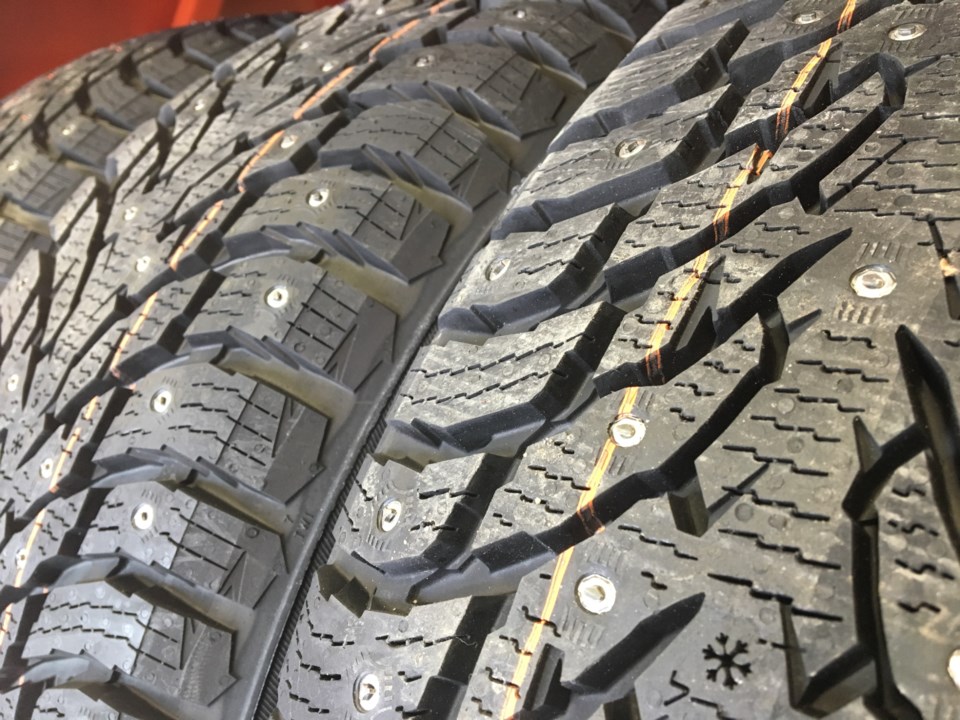OPP are reminding motorists that their studded winter tires must be off their vehicles before June 1, Studded tires, which are designed to sink into the ice to provide better traction, .can be used between September 1 and May 31 throughout Ontario.
"Winter driving can be challenging, and while Quebec is the only province where it's mandatory for every vehicle to have winter tires, all Canadian provinces recommend installing four winter tires when the mercury drops below 7 degrees Celsius," says Constable Phil Young.
Winter tires have replaced what used to be called snow tires. The difference is in the tread pattern and rubber compound.
"Snow tires had deeper grooves for gripping the snow, but the rubber got hard when it was cold and didn't work so well on ice," explains Young."Today's winter tires have a tread designed to grip both snow and ice by remaining soft in the cold. Transport Canada recommends installing four winter tires to maintain control and stability of your vehicle in icy conditions."
According to blackcircles.ca while studded tires are undeniably effective on icy roads, they cause irreparable damage to the road surface when it is not covered with ice.
"This is because the studs are strong enough to make holes in the tar," says the website. "In addition to the degradation of the road surface, these same tires cause faster wear of the road markings, which can eventually make traffic more dangerous if no longer visible.
"These tires hence cause significant damage to the infrastructure, and therefore result in higher costs for the authorities in charge of their maintenance, on top of potentially affecting road safety. In addition, tremendous progress has been made in the formulation of rubber compounds for winter tires, making the use of studded tires increasingly superfluous. Finally, studded tires are noisier than winter tires that do not have studs. If driving comfort is a priority for you, avoid studded tires."
